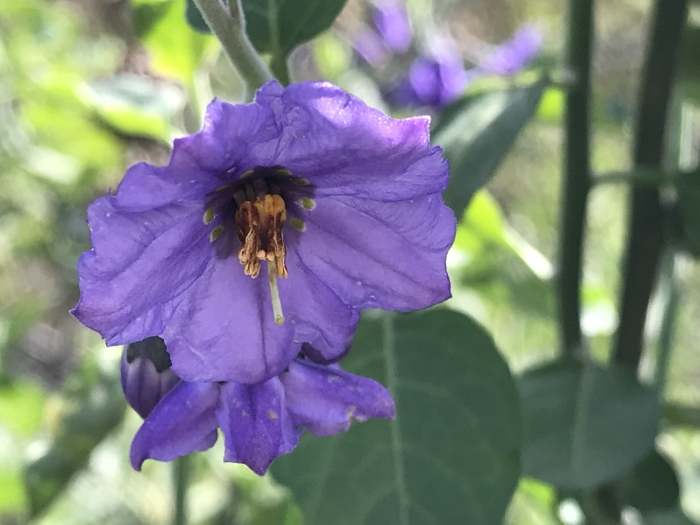Bluewitch Nightshade
(Solanum umbelliferum)
Bluewitch Nightshade (Solanum umbelliferum)
/
/

rappman
CC BY 4.0
Image By:
rappman
Recorded By:
Copyright:
CC BY 4.0
Copyright Notice:
Photo by: rappman | License Type: CC BY 4.0 | License URL: http://creativecommons.org/licenses/by/4.0/ | Rights Holder: rappman | Publisher: iNaturalist | Date Created: 2018-02-28T21:33:50Z |




















































Estimated Native Range
Summary
Solanum umbelliferum, commonly known as Bluewitch Nightshade, is a semi-deciduous perennial subshrub or herb native to the chaparral and coastal sage scrub of California, as well as the desert scrub of the Southwestern USA and Northwest Mexico. It typically grows to a height and width of 2-3 feet (0.6-0.9 meters), forming a mounding shape. Bluewitch Nightshade is characterized by its clusters of vibrant purple flowers that bloom in the spring and may continue into early summer, with sporadic flowering possible in milder winter climates. The flowers are star-shaped and attract pollinators such as bees and butterflies. When pollinated, the plant produces small, round green fruits that turn a shiny purple when ripe, resembling miniature eggplants, although they are not edible and are toxic if ingested.
This plant is valued for its drought tolerance and ability to thrive in challenging conditions, making it suitable for xeriscaping and native plant gardens. It is often used for habitat restoration projects and can be planted in rock gardens, borders, or as a ground cover. Bluewitch Nightshade prefers full sun to part shade and requires well-drained soils; it is tolerant of poor soils and does not need fertilization. While generally low-maintenance, it can be susceptible to aphids and whiteflies. Gardeners should be cautious as all parts of the plant are poisonous if ingested.CC BY-SA 4.0
This plant is valued for its drought tolerance and ability to thrive in challenging conditions, making it suitable for xeriscaping and native plant gardens. It is often used for habitat restoration projects and can be planted in rock gardens, borders, or as a ground cover. Bluewitch Nightshade prefers full sun to part shade and requires well-drained soils; it is tolerant of poor soils and does not need fertilization. While generally low-maintenance, it can be susceptible to aphids and whiteflies. Gardeners should be cautious as all parts of the plant are poisonous if ingested.CC BY-SA 4.0
Plant Description
- Plant Type: Subshrub, Herb
- Height: 1.5-3 feet
- Width: 1.5-3 feet
- Growth Rate: Moderate
- Flower Color: Purple
- Flowering Season: Spring, Winter
- Leaf Retention: Semi-Deciduous
Growth Requirements
- Sun: Full Sun, Part Shade
- Water: Low
- Drainage: Fast, Medium
Common Uses
Bank Stabilization, Bee Garden, Bird Garden, Border Plant, Butterfly Garden, Deer Resistant, Drought Tolerant, Hummingbird Garden, Low Maintenance, Potted Plant, Rabbit Resistant, Salt Tolerant
Natural Habitat
Native to chaparral, coastal sage scrub, and desert scrub of California, the Southwestern USA, and Northwest Mexico
Other Names
Common Names: Bluewitch
Scientific Names: , Solanum umbelliferum, Solanum umbelliferum var. umbelliferum, Solanum cupuliferum, Solanum genistoides, Solanum menziesii, Solanum microphyllum,
GBIF Accepted Name: Solanum umbelliferum Eschsch.